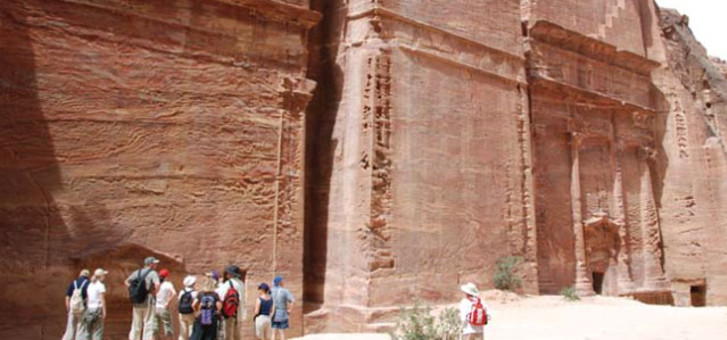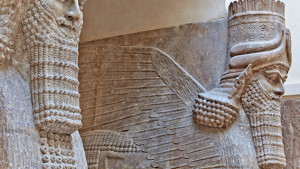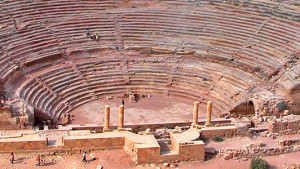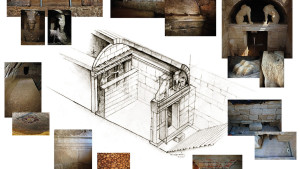More than thirty years ago geologists recognizes that there was a “Great Rift Valley” extending from south eastern turkey through the Jordan Valley and Wadi Arava , rising to sea level in Aqaba, then through the Red Sea and on to East Africa. This area was prone to heavy earthquakes.
Petra lay to the east of Wadi Arava and was hidden between the sandstone mountains. Petra was the capital city of the Nabateans who created among the “Sharah” mountains a unique city in the ancient world.
The Nabateans were a group of nomadic people who came from Yemen via Saudi Arabia to Jordan during the 6th century BC. Their origin is obscure. There are several early historical references to Arabic people whom scholars have tried to identify with the Nabateans.
The Assyrian records from the 8th to the 6th century BC mention an Aramaic and/or Arab people called “Nabatu”. The Old Testament says that Ishmael was a son of Abraham, and he was the progenitor of the Arabs. 1 Chronicles 1:29 says that Ishmael had a son called Nebaioth who may have been the father of the Nabateans.
The Nabateans soon adapted to life in Petra. They were very industrious people and were good traders. Trade was already well established when they took over, and they increased trading activities. They were a very religious people, and they believed in life after death. That is why they carved beautiful facades in honour of the dead.
Al-Khazne “The Treasury” is one of the best preserved facades in Petra (see photo on cover). It is located at the end of Al Siq, the ravine that leads into the Petra Valley. It is beautifully decorated with columns, statues, and cornices. It was one of the royal tombs and may have been prepared for the burial of Aretas the fourth who was one of the most powerful Nabatean kings during the 1st century AD .
Excavations begun in 2003 revealed some earlier tombs in front of Al-Khazne. They had their tops removed to make way for the treasury. This project had two objectives. It was designed to protect the site from flooding, and to ensure the safety of visitors. Local archaeologists started working on the project on the 14th of April.
Four tomb chambers have so far been excavated in front of the treasury. Their function as tombs was confirmed by the bones collected in the courtyard, including a human skull that was two metres away from the burial site. The Danish team which undertook conservation on the skull identified it as belonging to a man of around 50 years of age.
Animal bones were also identified, in particular the skeleton of a ram which was found on the floor of the chamber. This was most probably the remains of a funeral banquet, or perhaps it was a ceremonial sacrifice.
From the results obtained during the excavations, four main phases of history were identified. The oldest was called the Incense Tomb whose façade measured 2.54 metres in height and 4.55 metres in width. The tomb is simple and was topped by a frame which has a number of small holes. It was intended for a single burial.
The Window Tomb, the Staircase Tomb and the Obliterated Tomb belonged to the second phase. The Window Tomb was carved in the rock face in front of Al-Khazne. The entrance and façade of the tomb were blocked with stone ashlars. It has a pediment that is decorated with three solid urns, one at each corner and one at the top.
The Staircase Tomb has a façade of the Hegra type. Such a tomb consists of two levels with crow steps decorating the upper level. The Obliterated Tomb was cut after the Window Tomb and the chamber was not completed .
Phase three is represented by the Al-Khazne façade that was executed only a short time after the carving of the Window and Staircase tombs.
Phase four is represented by floors, paved courtyards, the central staircase, the side staircase, walls, water channels and dams
Further excavations are sure to reveal much more of Petra’s past.





